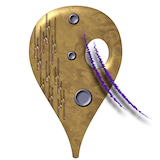Posts From 2016
(See recent posts or posts from: 2024 2023 2022 2021 2020 2019 2018 2017 2016 2015 2014 2013 2012 2011 2010 2009 2008)
- December 2016
-
(2016-12-07) Quern: Undying Thoughts: design ruminations
- November 2016
-
(2016-11-23) Hadean Lands on sale this week!2 comments (latest 3 hours later)
-
(2016-11-06) Even more very quick takes on recent games
- October 2016
-
(2016-10-16) Alchemy game notes, circa 2003
-
(2016-10-03) More very quick takes on recent games2 comments (latest 2021-12-29)
- September 2016
-
(2016-09-08) My Obduction nonreview1 comment (09-28)
-
(2016-09-07) Dropbox dropping support for playable HTML4 comments (latest 5 days later)
- August 2016
-
(2016-08-13) Very quick takes on recent games1 comment (2 days later)
-
(2016-08-07) Mysterium news roundup4 comments (latest 10 hours later)
- July 2016
-
(2016-07-27) Point-of-view in The Witness: design ruminations1 comment (08-12)
-
(2016-07-21) SFWA eligibility for game writers1 comment (5 days later)
-
(2016-07-17) Soma: meanderings by a wuss2 comments (latest 1 day later)
-
(2016-07-06) Hadean Lands, two weeks in4 comments (latest 08-21)
- June 2016
-
(2016-06-28) So I bought a Steam Machine. How did that go?4 comments (latest 1 day later)
-
(2016-06-20) Hadean Lands is now up on Steam6 comments (latest 1 day later)
-
(2016-06-17) Bring Out Your Dead: Flashpaper
-
(2016-06-01) Hadean Lands: update available on Humble and Itch7 comments (latest 3 days later)
- April 2016
-
(2016-04-21) The irritating case of Hadean Lands pricing on Steam17 comments (latest 05-03)
-
(2016-04-17) IF awards and how we think about them10 comments (latest 04-30)
-
(2016-04-12) More progress towards Hadean Lands on Steam
- March 2016
-
(2016-03-24) Notes from GDC
-
(2016-03-05) Firewatch: afterthoughts2 comments (latest 3 hours later)
- February 2016
-
(2016-02-28) Meanwhile for Apple TV!
-
1 comment (2019-04-27)
-
(2016-02-17) The Space Under the Window on sub-Q
-
(2016-02-12) Meanwhile for Apple TV coming soon
- January 2016
-
(2016-01-26) Introducing Lectrote, an interpreter8 comments (latest 10-27)
-
(2016-01-24) Hadean Lands sale at IndieGameStand4 comments (latest 2 days later)
-
(2016-01-07) IGF nominees: my comments2 comments (latest 2021-02-12)reviews, gdc, narrative, interactive fiction, igf, if, structure, the writer will do something, sun dogs, dr. langeskov, the tiger, the terribly cursed emerald, the beginner's guide, that dragon cancer, her story, the magic circle, emily is away, cibele, read only memories, oxenfree, sunset, undertale

